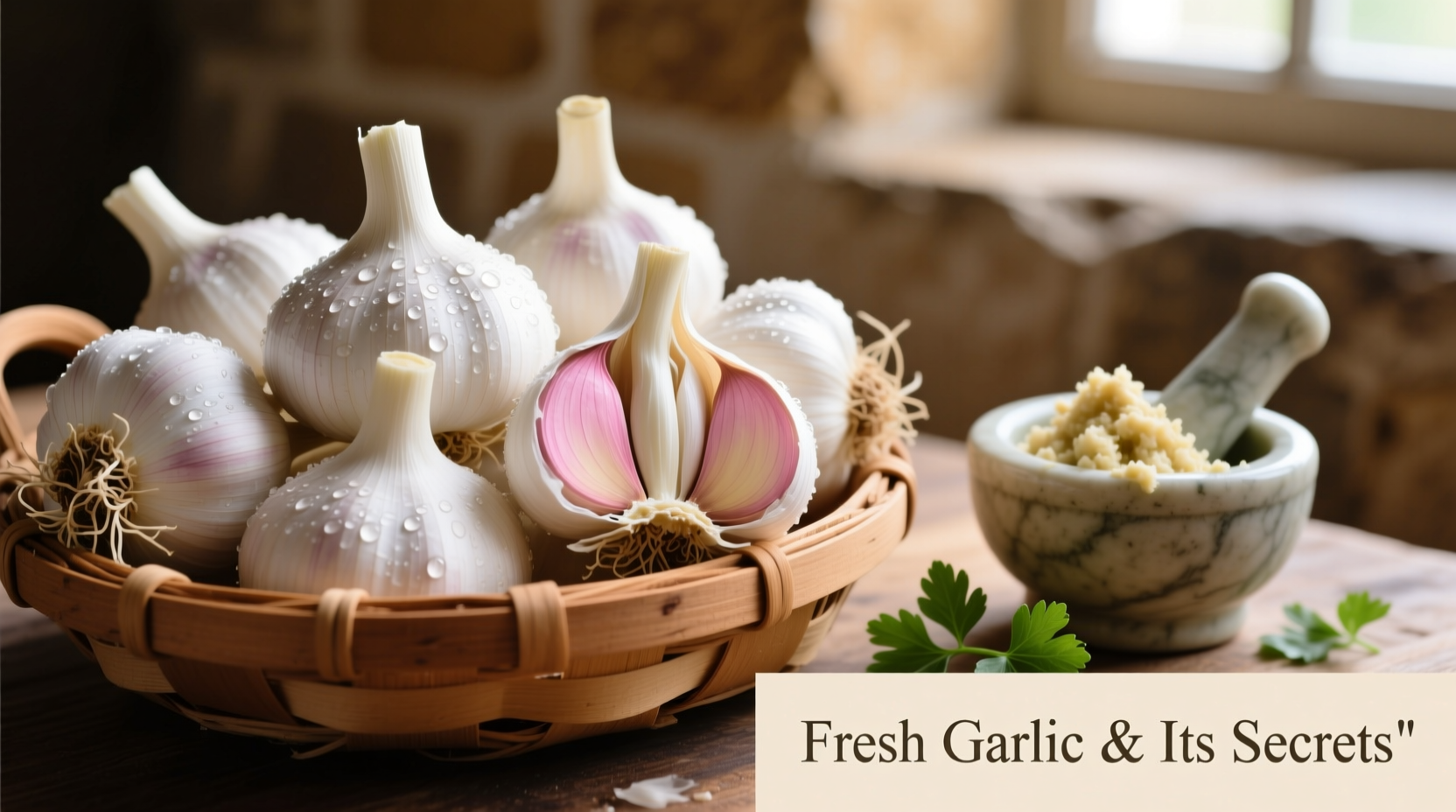Garlic isn't just a flavor enhancer—it's the secret weapon in every chef's arsenal. When used properly, this humble bulb creates complex, aromatic dishes that satisfy both casual weeknight cooks and culinary enthusiasts. The key lies in understanding garlic's chemistry and applying the right techniques at the perfect moment during cooking.
Garlic Varieties and Selection Guide
Not all garlic is created equal. Choosing the right variety makes a significant difference in your final dish. Softneck garlic (the common supermarket variety) offers a milder flavor perfect for raw applications, while hardneck varieties like Rocambole deliver more complex, robust notes ideal for roasting.
| Garlic Type | Flavor Profile | Best Uses | Storage Duration |
|---|---|---|---|
| Softneck (Artichoke) | Mild, slightly sweet | Raw applications, sauces, long-term storage | 9-12 months |
| Hardneck (Rocambole) | Complex, robust, earthy | Roasting, sautéing, specialty dishes | 4-6 months |
| Silverskin | Strong, pungent | Preserving, pickling, intense flavor needs | 12+ months |
According to the USDA Agricultural Research Service, garlic contains over 30 sulfur compounds that develop differently based on preparation method and cooking time. This scientific understanding helps explain why proper garlic handling transforms dishes from ordinary to exceptional (USDA ARS, 2023).
Essential Garlic Preparation Techniques
Professional chefs know that how you prepare garlic affects its final flavor profile. The enzyme alliinase, activated when garlic is cut or crushed, creates different compounds based on your technique:
- Minced finely: Releases maximum allicin for intense flavor (best added later in cooking)
- Sliced: Provides moderate flavor release with visible garlic pieces
- Whole cloves: Mellow, sweet flavor when roasted (perfect for stews and braises)
- Roasted: Creates sweet, caramelized notes with minimal pungency

7 Practical Garlic Recipes for Every Occasion
1. 15-Minute Garlic Butter Shrimp Pasta
Ideal for busy weeknights, this restaurant-quality dish requires just seven ingredients. The secret? Adding minced garlic during the last 90 seconds of sautéing prevents bitterness while maximizing flavor absorption.
2. Whole Roasted Garlic Chicken
This weekend centerpiece features garlic cloves stuffed under the chicken skin and scattered around the pan. As the chicken roasts, the garlic becomes sweet and spreadable—perfect for finishing sauces or spreading on crusty bread.
3. Creamy Garlic Mushroom Risotto
Vegetarian-friendly and deeply satisfying, this recipe uses both minced garlic early for base flavor and roasted garlic near the end for complexity. The James Beard Foundation notes that proper garlic timing in risotto prevents the "burnt garlic" off-flavor that ruins many home attempts (James Beard Foundation, 2024).
4. Roasted Garlic Lemon Salmon
Healthy and elegant, this dish showcases how roasted garlic complements delicate fish. The garlic's natural sweetness balances the lemon's acidity, creating a restaurant-quality meal in under 20 minutes.
5. Three-Bean Garlic Soup
A budget-friendly pantry meal that feels luxurious. Whole garlic cloves simmered in the broth provide subtle background notes without overwhelming the dish. This technique works particularly well for soups and stews where you want garlic flavor without distinct pieces.
6. Homemade Garlic Aioli
The ultimate condiment for sandwiches, roasted vegetables, or as a dipping sauce. Freshly made aioli with properly prepared garlic beats store-bought versions every time. For best results, let the aioli rest for 30 minutes before serving to allow flavors to meld.
7. Garlic Parmesan Roasted Vegetables
A versatile side that works with nearly any vegetable. Toss vegetables with olive oil, whole garlic cloves, and herbs before roasting. The garlic infuses the vegetables with flavor while remaining intact for easy removal if desired.
Garlic Flavor Development Timeline
Understanding how garlic's flavor evolves during cooking helps prevent common mistakes. This timeline shows the critical temperature points that determine your final flavor profile:
- 0-30 seconds: Raw garlic added to hot oil begins developing flavor compounds
- 30-60 seconds: Optimal window for maximum flavor development without burning
- 60-90 seconds: Garlic starts turning golden—flavor becomes nutty and complex
- 90+ seconds: Risk of bitterness increases significantly as garlic browns
Professional chefs at the Culinary Institute of America emphasize that removing garlic from heat just before it reaches the desired color prevents carryover cooking from burning this delicate ingredient (CIA, 2023).
Avoiding Common Garlic Mistakes
Even experienced cooks make these garlic errors. Understanding these context boundaries will transform your results:
- Burning garlic: Medium heat works better than high heat for sautéing. If your oil starts smoking, it's too hot for garlic.
- Using pre-minced garlic: Jarred versions contain preservatives that create off-flavors. Freshly prepared garlic makes a noticeable difference.
- Adding garlic too early: In multi-ingredient dishes, add garlic after onions but before delicate herbs.
- Ignoring garlic variety: Hardneck varieties burn more easily than softneck—adjust cooking times accordingly.
Maximizing Garlic's Potential
Garlic's versatility extends beyond simple flavoring. Try these professional techniques to elevate your cooking:
- Freeze whole peeled cloves for easy access during cooking
- Create garlic-infused oil by gently warming cloves in olive oil (never leave unattended)
- Use roasted garlic as a spread for sandwiches or pizza base
- Add a pinch of baking soda when roasting to speed caramelization
- Preserve excess garlic in vinegar for salad dressings
Remember that garlic continues to develop flavor after cooking. For best results, let dishes rest for 5-10 minutes before serving to allow flavors to integrate fully. This simple step makes a noticeable difference in complex dishes like risottos and braises.











 浙公网安备
33010002000092号
浙公网安备
33010002000092号 浙B2-20120091-4
浙B2-20120091-4